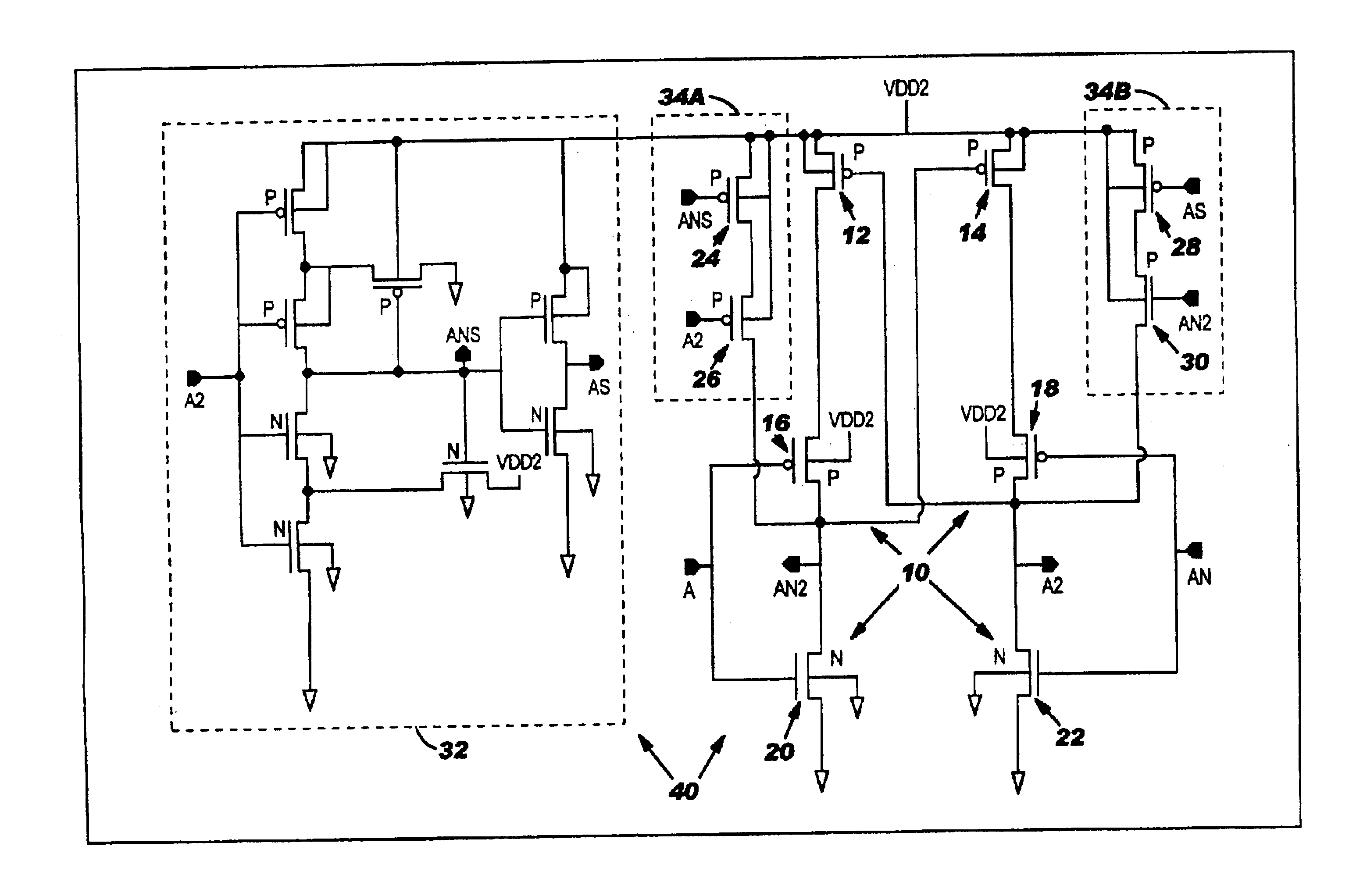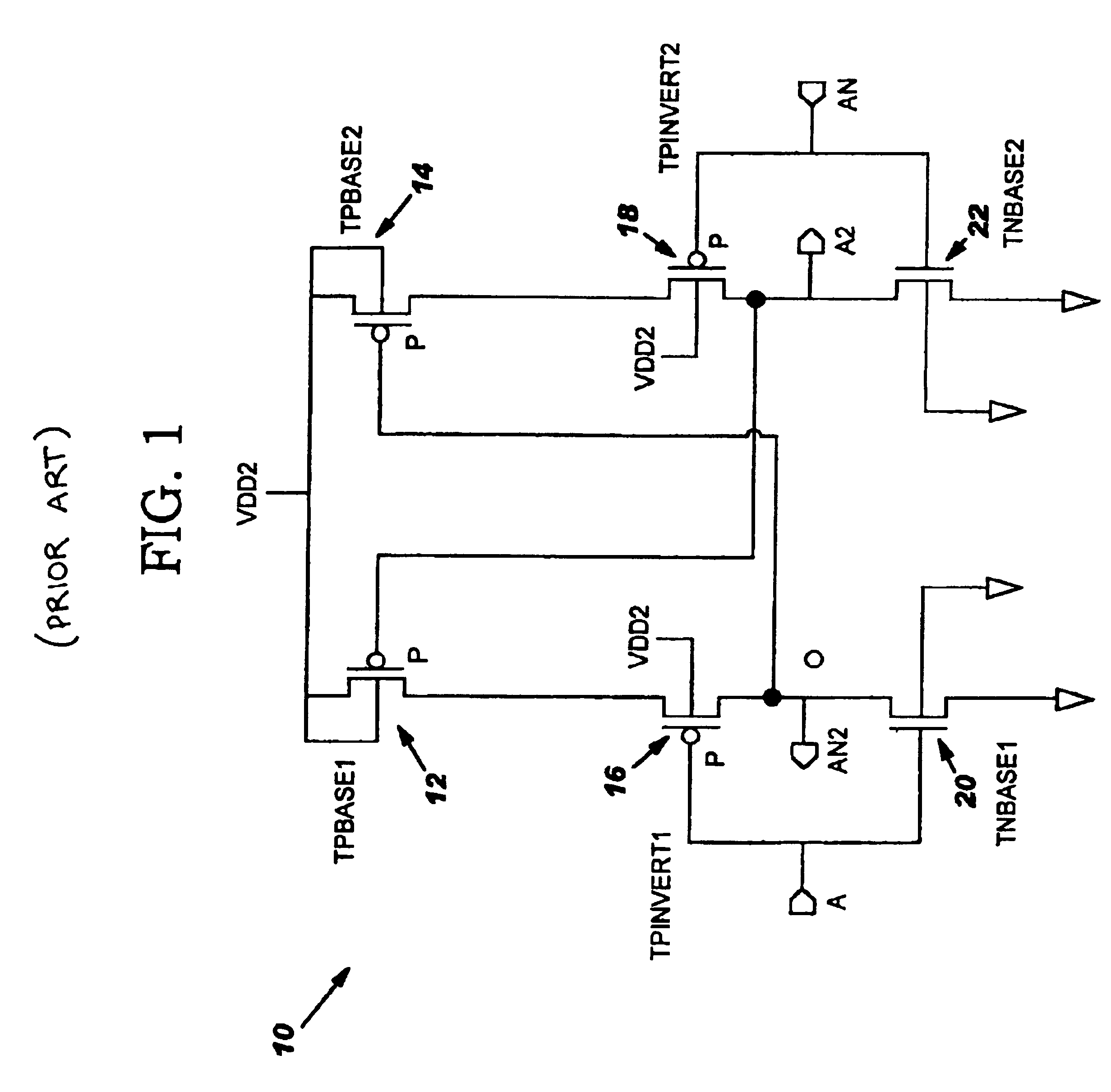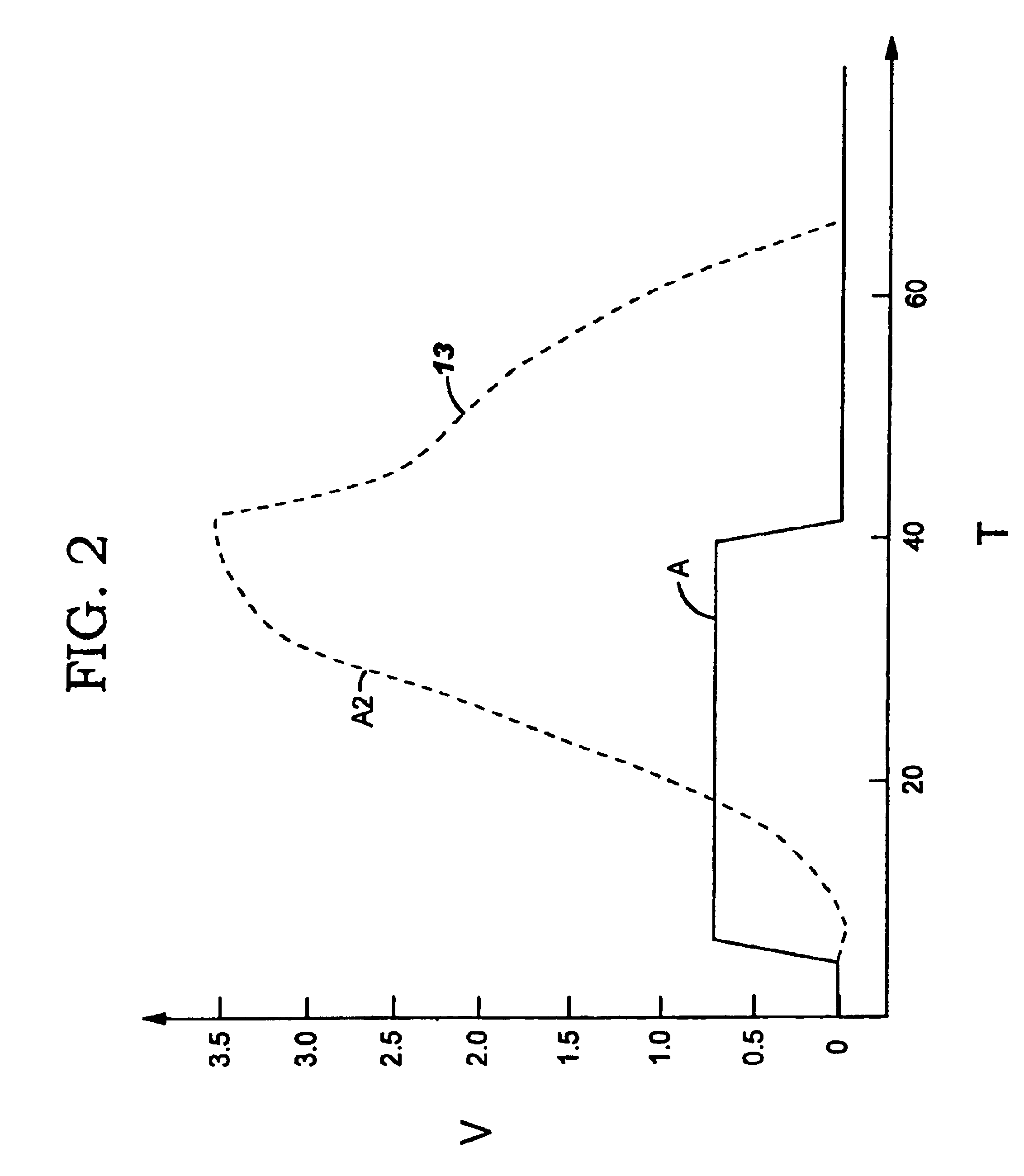Level shift circuitry having delay boost
a level shift circuit and boost technology, applied in logic circuits, pulse automatic control, pulse techniques, etc., can solve the problems of pedestal and potentially false switch, unable to guarantee the operation of existing level shift circuitry under all conditions, and increasing the difficulty of interfacing newer ic devices with legacy systems, so as to reduce the delay caused by pmos to nmos contention and reduce the rise and fall times.
- Summary
- Abstract
- Description
- Claims
- Application Information
AI Technical Summary
Benefits of technology
Problems solved by technology
Method used
Image
Examples
Embodiment Construction
As shown in FIG. 3, the present invention provides a level shift circuit 40 that shifts voltages from a core voltage level VDD1 (not shown) to a second voltage level VDD2 such that the PMOS to NMOS contention is minimized without affecting performance. In an exemplary application, VDD1 may range from about 0.7-0.9 V and VDD2 may range from about 3.3-3.6 V. However, it should be understood that the level shift circuit 40 of the present invention is not limited to the above-mentioned voltage differences between VDD1 and VDD2, i.e., the invention can be implemented to handle voltage level shifts from 0.7 to 3.6V, or greater.
FIG. 3 depicts an exemplary device 11 having level shift circuit 40 in accordance with the present invention. Device 11 may comprise any type of integrated circuit device, chip, I / O device, etc., that requires a shifting of voltage levels. The level shift circuit 40 includes a level shifter 10 (as described in FIG. 1), boost circuitry 34A and 34B for decreasing the ...
PUM
 Login to View More
Login to View More Abstract
Description
Claims
Application Information
 Login to View More
Login to View More - R&D
- Intellectual Property
- Life Sciences
- Materials
- Tech Scout
- Unparalleled Data Quality
- Higher Quality Content
- 60% Fewer Hallucinations
Browse by: Latest US Patents, China's latest patents, Technical Efficacy Thesaurus, Application Domain, Technology Topic, Popular Technical Reports.
© 2025 PatSnap. All rights reserved.Legal|Privacy policy|Modern Slavery Act Transparency Statement|Sitemap|About US| Contact US: help@patsnap.com



